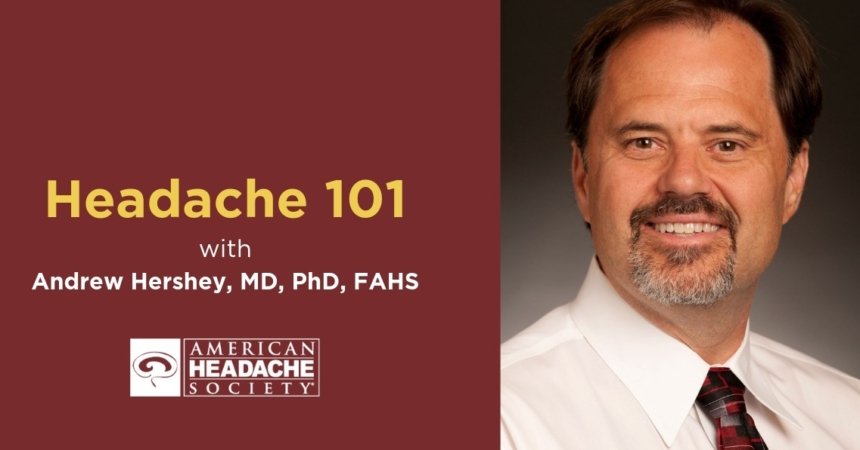
Headache 101 with Dr. Andrew Hershey
Andrew Hershey, MD, PhD, FAHS, walks through the characteristics of headache and how to classify them
Andrew Hershey, endowed chair and director of neurology at Cincinnati Children’s Hospital Medical Center and the director of the Headache Center, recently discussed the basics of headache diagnostics and treatment, and how to explain them to patients. Watch the full interview from the 2018 Scottsdale Headache Symposium here:

There are a number of aspects that Dr. Hershey counsels his patients on when they see him for headache treatment. If a patient comes in with a secondary headache issue—one created by another condition—then treatment can be focused in that direction. But primary headaches—which include migraine—require different kinds of solutions, and they often require advising the patient on how to have better control over their environment.
Dr. Hershey says that one of the first and easiest ways for patients to do this is to take good care of themselves. For providers, this means coaching patients on four wellness areas that require healthy habits. Dr. Hershey advises patients to be mindful of their hydration, exercise, nutrition and sleep.
“I tell patients that the biggest thing they can do, as a starting point, is to take good care of themselves,” he says.
Getting to know your patient is also important. Part of this is about recognizing their age. For pediatric patients, some lifestyle changes are especially important, but there are other youth-specific factors that come into play with migraine. He specifically mentions school start times as playing a role in poor sleep habits, but some older children may be reaching a point in their lives where they are beginning to experiment with alcohol.
“Some of the young adults that are that age are drinking alcohol, and addressing that can become an important feature of migraine treatment, too,” Dr. Hershey says. “Maintaining an adequate balance in your life is important.”
For many patients, stress can also be an aggravator of migraine, Dr. Hershey says. He notes that healthcare providers may want to recommend cognitive behavioral therapy, which has been proven to be an excellent means of helping to control stress when it’s a trigger.
“It’s not necessarily about eliminating triggers, but recognizing when you’re in one of those trigger-induced or stressful situations, and then having the skills to deal with that,” he says. “More and more evidence is showing that it’s not necessarily what we do but how we do it.”
Dr. Hershey says that it’s important for healthcare providers to make sure their patients have a full understanding of what migraine treatment looks like. This means ensuring that patients have all of their questions answered and that there is nothing left in doubt at the end of every appointment.
“Spending that extra time to answer those questions is likely to improve the outcome for those patients,” he says. “It’s not just the first visit, but as they continue to go through their course of treatment with us, we take an approach of continuing to educate them.”


